Golf is a game of precision, patience, and skill that has captured the hearts of millions around the globe. Whether you’re an avid player or a casual fan, you’ve probably found yourself wondering, who is the top golfer in the world? As of now, the title has been claimed by Scotty Scheffler, and here we’ll explore what makes him stand out in the competitive world of professional golf.
Current Rankings Overview
The Official World Golf Ranking (OWGR) provides a definitive ranking of golfers based on their performance in tournaments over a rolling span of two years. This system ensures that players are recognized not just for one-off wins but for consistent excellence.
Top Five Golfers in the World (As of October 2023)
| Rank | Player | Nationality | Average Points |
|---|---|---|---|
| 1 | Scotty Scheffler | USA | 9.22 |
| 2 | Rory McIlroy | Northern Ireland | 8.94 |
| 3 | Jon Rahm | Spain | 8.67 |
| 4 | Patrick Cantlay | USA | 8.45 |
| 5 | Xander Schauffele | USA | 8.19 |
 Scotty Scheffler Holding Trophy on Golf Course
Scotty Scheffler Holding Trophy on Golf Course
Billions of Dollars, One Dream: The Pursuit of Golfing Greatness
Who is Scotty Scheffler?
Scotty Scheffler, hailing from Dallas, Texas, has made waves in the golfing community with his phenomenal skills and impressive stats. He turned professional in 2018 and quickly rose through the ranks, demonstrating not just talent but also intellect and resilience in his game.
- Key Achievements:
- Winner of the 2022 Masters Tournament
- Multiple-time PGA Tour winner
- Consistent top finishes in major championships
What Sets Scheffler Apart?
Consistent Performance
One of the key aspects that elevate Scheffler above his peers is his consistent performance. He has demonstrated an ability to perform well across various courses and conditions, capitalizing on both long drives and precise putting.
Mental Fortitude
Golf is as much a mental game as it is physical. Scheffler’s ability to withstand the pressures of the tour, particularly in high-stakes situations, is noteworthy. His poise during tight rounds has earned him respect among fellow players and fans alike.
 Scotty Scheffler Lining Up a Putt with Intense Focus
Scotty Scheffler Lining Up a Putt with Intense Focus
Key Stats
- Driving Distance: 320 yards (ranked in the top 10 on the PGA Tour)
- Putting Average: 1.75 putts per green in regulation
- Scoring Average: 68.6
Competition for the Top Spot
While Scheffler currently holds the title of the top golfer, the competition is fierce. Players like Rory McIlroy, Jon Rahm, and Patrick Cantlay are all neck and neck, making for an exciting golfing season.
- Rory McIlroy: Known for his powerful drive and extensive knowledge of the game, Rory continues to be a formidable competitor on the tour.
- Jon Rahm: The Spanish dynamo brings power and finesse, proving to be a constant threat in major tournaments.
- Patrick Cantlay: A strategic thinker with a strong all-around game, Cantlay performs well consistently across events.
Major Upcoming Events
The golf calendar is packed with exciting tournaments, and each one could influence the rankings. Key events to watch include:
- The PGA Championship
- The U.S. Open
- The Open Championship
- The Ryder Cup
These competitions serve as opportunities for both seasoned players and rising stars to make a mark.
 Golf Course Aerial View with Spectators Surrounding Green
Golf Course Aerial View with Spectators Surrounding Green
Tips for Aspiring Golfers Based on the Pros
Improving Your Game
While your journey in golf may not lead you to the top of the OWGR, there are always skills to develop. Here are some tips directly from the playbooks of the pros:
- Practice Your Short Game: Most professionals agree that saving strokes around the green is key to scoring well.
- Work on Mental Strength: Just like Scheffler, developing a mental game can set you apart. Techniques like visualization and focused breathing can help.
- Optimize Your Equipment: Make sure your clubs and balls fit your style of playing. Just like pro golfers, invest in finding what works best for you.
Key Takeaways
- Scotty Scheffler is currently the top golfer in the world, leading the Official World Golf Ranking.
- His consistent performance, mental fortitude, and physical skills make him stand out from the crowd.
- Future events such as the PGA Championship and U.S. Open will be crucial for reshaping the golf rankings.
- Aspiring golfers can gain valuable tips from the pros to enhance their game.
Frequently Asked Questions (FAQs)
- What determines the golf world rankings? The Official World Golf Ranking evaluates players based on their performance in tournaments over a rolling two-year period.
- How often are the golf rankings updated? The rankings are updated weekly based on players’ performances in tournaments.
- Who are the most successful golfers in history? Players like Tiger Woods, Jack Nicklaus, and Arnold Palmer are considered some of the greatest in golf history.
- What are the major championships in golf? Major championships include The Masters, U.S. Open, The Open Championship, and the PGA Championship.
- What skills should I focus on to become a better golfer? Focus on your short game, mental game, and ensure your equipment is tailored to your needs.
- Is Scotty Scheffler the first Texas golfer to reach the top spot? Yes, he is both the first Texas golfer and the first player born in the 1990s to achieve this ranking.
- Can I follow Scotty Scheffler’s games? Yes! Follow the PGA Tour website or ESPN for live updates and scores.
- What impact do sponsorships have on a golfer’s career? Sponsorships can provide financial support that allows golfers to focus on their game without stress.
- Are there women’s golf rankings? Yes, there are separate rankings for women, known as the Women’s World Golf Rankings.
- Will the rankings change with each tournament? Yes, players can move up and down the rankings based on their performances in upcoming tournaments.
Golfing fans and aspiring players alike can rejoice in the thrilling dynamics of the sport. As the world continues to observe the skills of Scotty Scheffler and other top players, every swing of the club brings new opportunities and excitement. Keep your clubs ready, and who knows? The next champion could be you!

 Collin Morikawa Executes an Iron Shot
Collin Morikawa Executes an Iron Shot
 Jack Nicklaus, Gary Player, and Lee Trevino
Jack Nicklaus, Gary Player, and Lee Trevino Tiger Woods Celebrating a Win
Tiger Woods Celebrating a Win
 Azusa Greens Signature Hole
Azusa Greens Signature Hole Azusa Greens Golf Tournament
Azusa Greens Golf Tournament Azusa Greens Clubhouse Event
Azusa Greens Clubhouse Event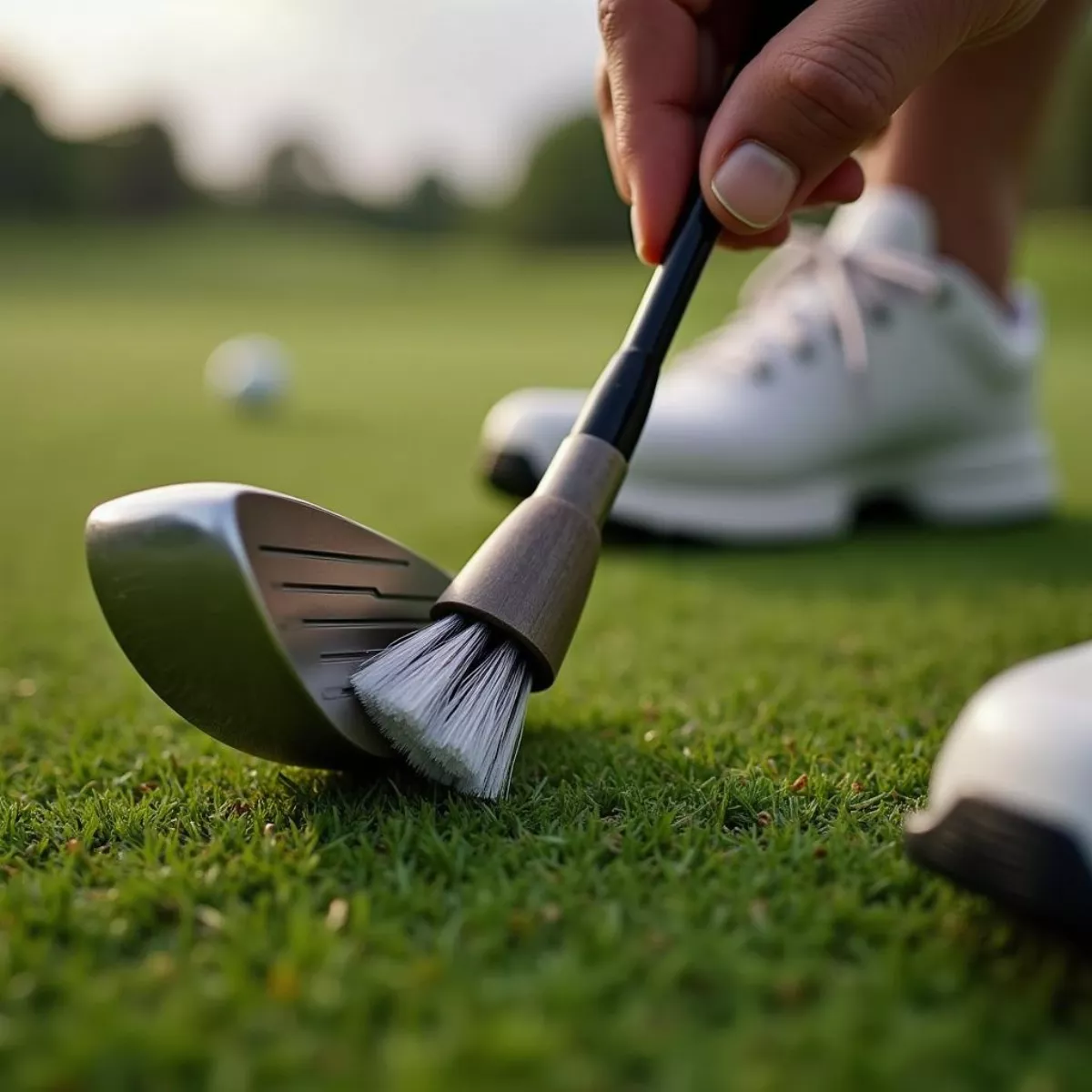
 Drying golf club with microfiber cloth
Drying golf club with microfiber cloth Dirty golf club grooves affecting performance
Dirty golf club grooves affecting performance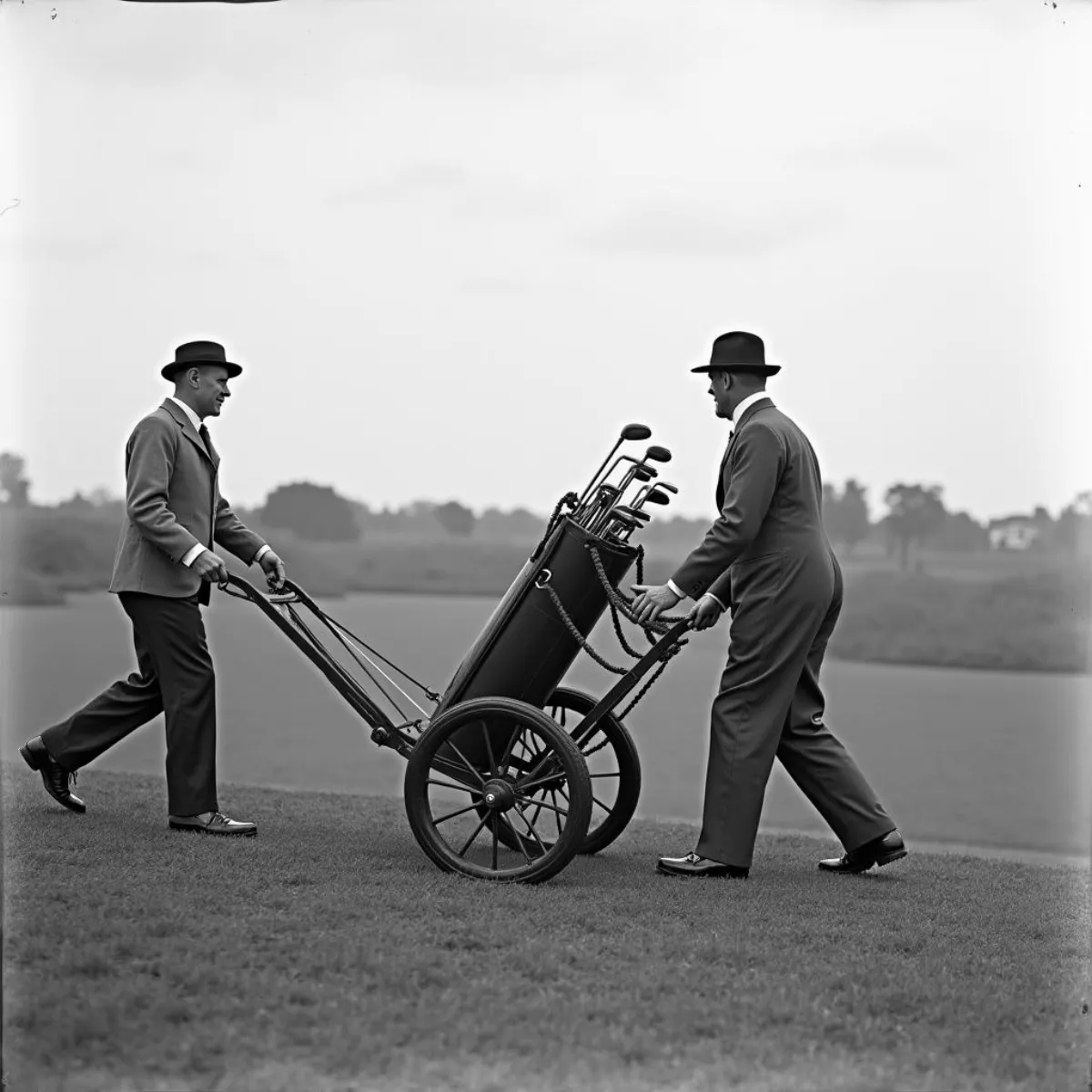
 Evolution of golf carts collage
Evolution of golf carts collage Golf cart uses beyond golfing
Golf cart uses beyond golfing Electric golf cart charging at a station
Electric golf cart charging at a station
 Beginner Golfer Selecting Golf Balls
Beginner Golfer Selecting Golf Balls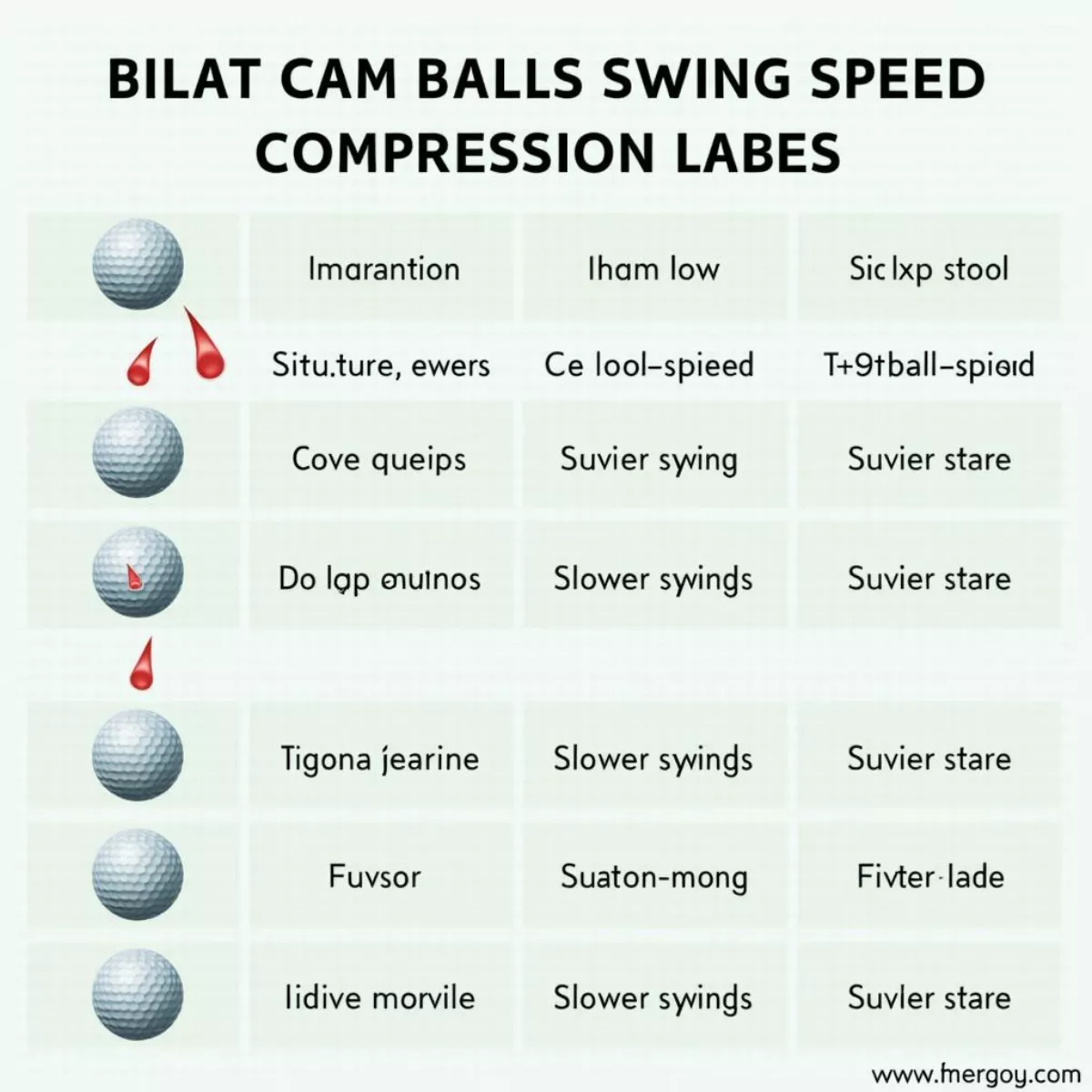 Golf Ball Compression Rating Guide
Golf Ball Compression Rating Guide
 Golf Ball Landing on Green
Golf Ball Landing on Green
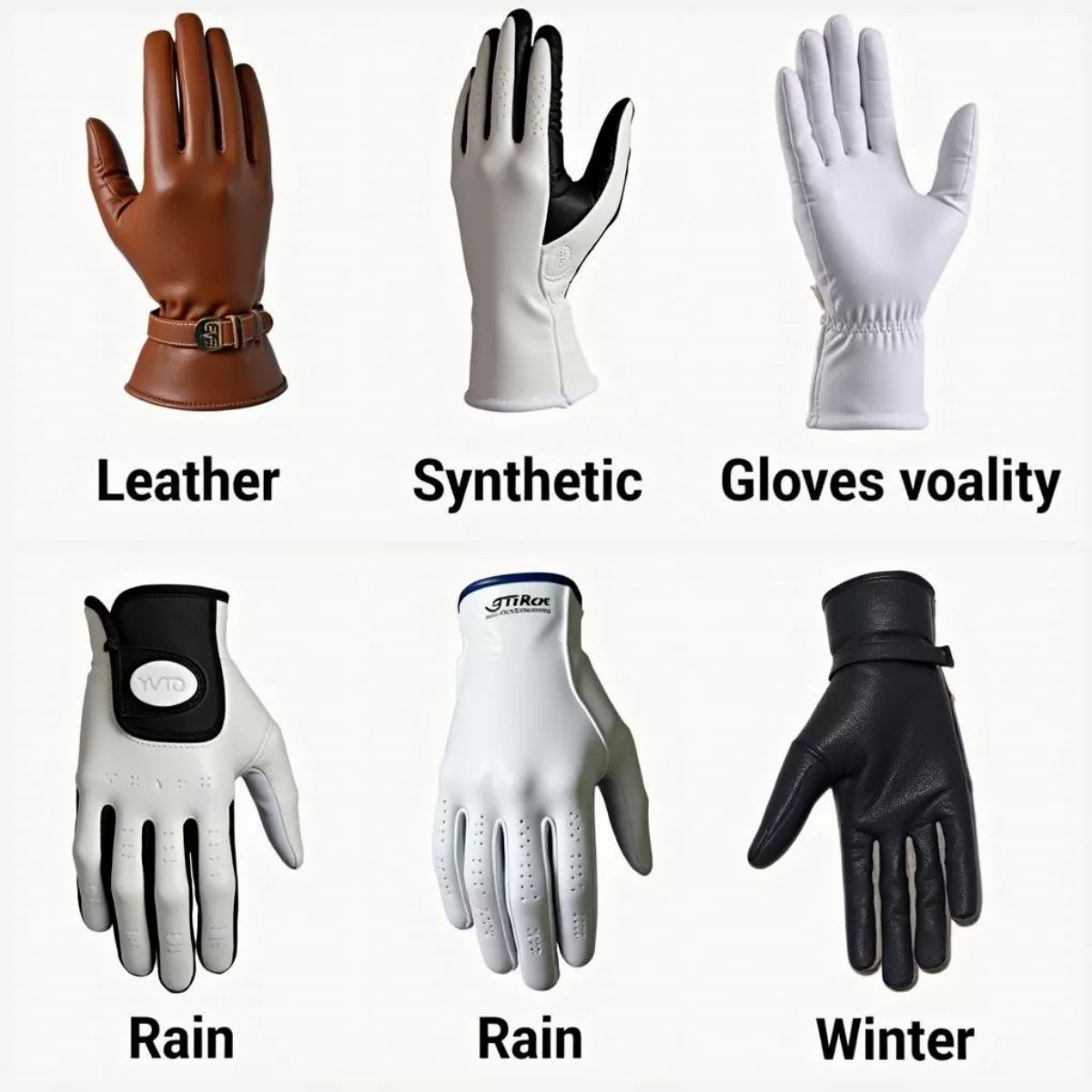 Various golf gloves
Various golf gloves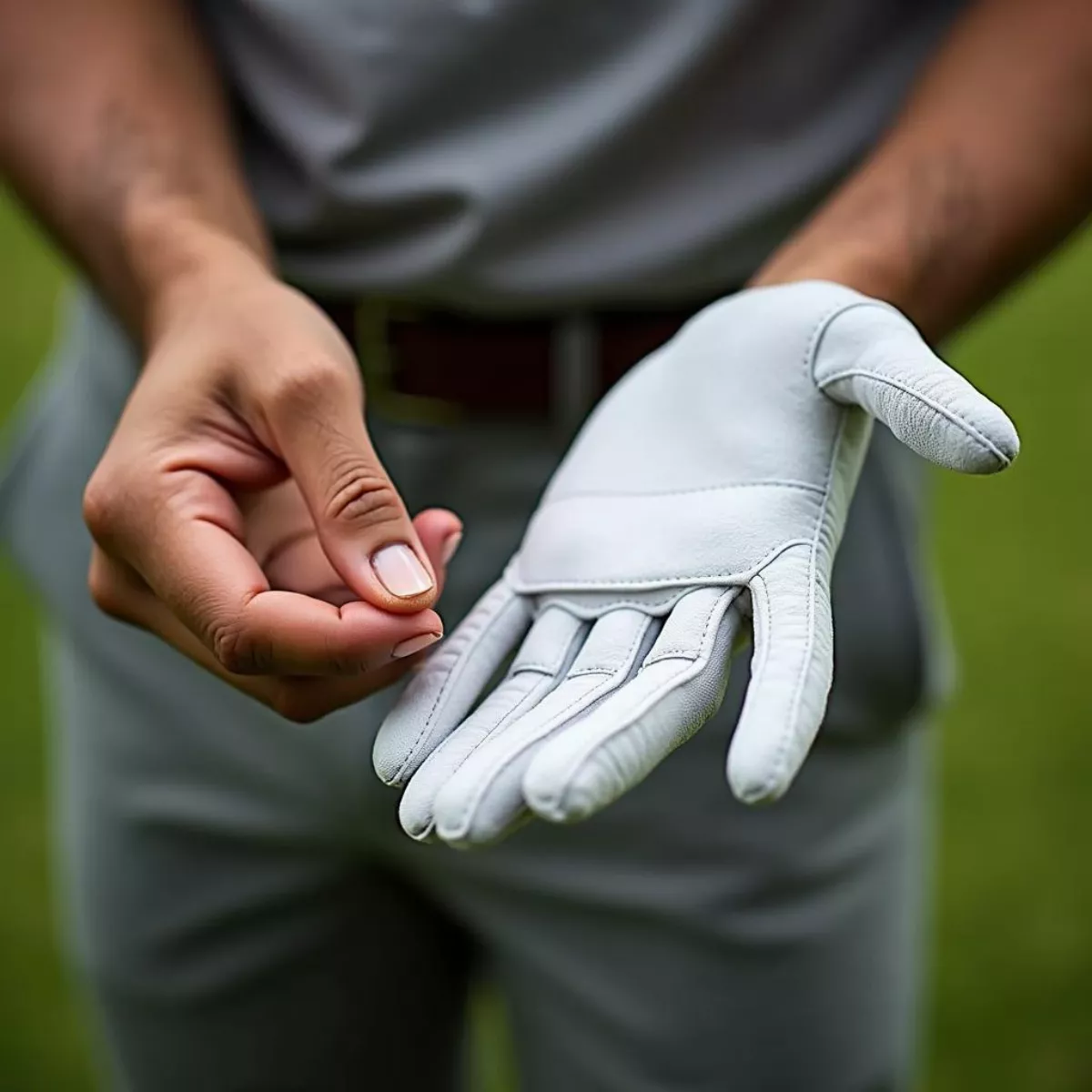 Golfer wearing a glove
Golfer wearing a glove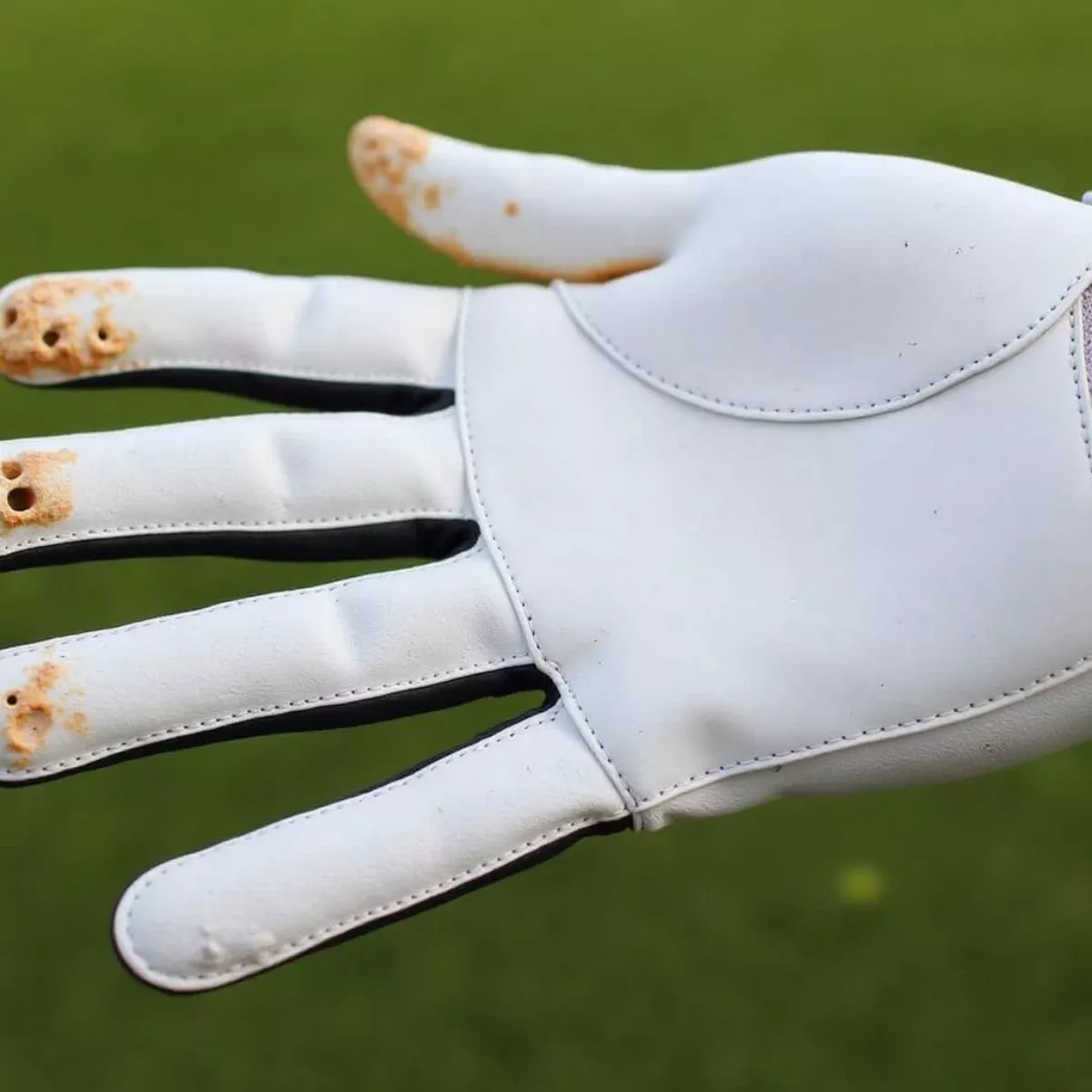 Worn golf glove
Worn golf glove
 Avondale's signature Hole 6
Avondale's signature Hole 6 Avondale's restaurant patio
Avondale's restaurant patio Golfers socializing at Avondale
Golfers socializing at Avondale Map showing Avondale Golf Course and nearby attractions
Map showing Avondale Golf Course and nearby attractions